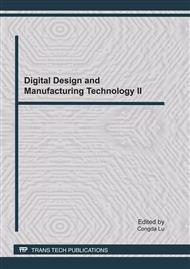p.361
p.366
p.373
p.379
p.384
p.389
p.393
p.397
p.401
Autonomous Control of Abrasive Flow Precision Machining
Abstract:
Autonomous nodes distribution, including their relations, real time quality and network communication in abrasive flow precision machining (AFPM) was studied. Autonomous nodes are arranged according to their function. Control program of motor speed is copied into liquid level nodes, pressure nodes, temperature nodes, flux nodes and input/output nodes. If nodes failure has happened, competition algorithm is enabled automatically to select a new node to run important program. Reliability of autonomous control system can be calculated utilizing the formula derived from probability theory. ARM 9 embedded systems with 32 bit CPU and real time embedded operating system are adopted to realize real time quality and reliability of nodes which run independently. CAN field bus and message type flag are used in network communication structure to ensure the real time quality and reliability of nodes connection. Results reveal that using autonomous decentralized control in AFPM possesses not only the characteristic of real time quality, but also the online fault tolerance, which can ensure that system runs continuously even if some nodes break down. The method can avoid system destruction and improve whole system reliability.
Info:
Periodical:
Pages:
384-388
Citation:
Online since:
March 2011
Authors:
Price:
Сopyright:
© 2011 Trans Tech Publications Ltd. All Rights Reserved
Share:
Citation:


